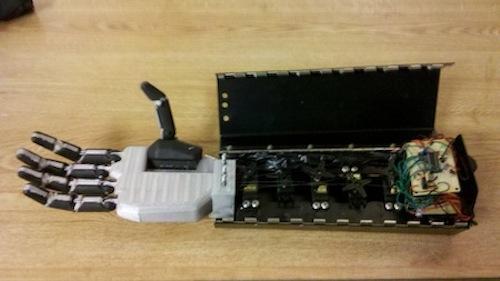The Importance of UAVs
May 28, 2014

Unmanned aerial vehicles (UAVs) are playing increasingly important roles in our everyday lives. On the basis of gross weight (1,000 lb to 0.1 lb), operational altitude above ground level (10,000 ft to 100 ft), and mission endurance (six hours to 0.5 hours), UAVs may be classified broadly into large, mini, small, micro, and nano classes. Across all UAV classes, applications are expected to require more autonomy, i.e., the ability to operate without the need for sustained human supervision. The development of effective flight control algorithms that are computationally inexpensive, though fully accommodating limitations on control surface type, size, and mode of actuation, is a challenging problem. In the future, these UAVs will operate as a system, so all levels of autonomous operation will need to be developed.
Quadrotors are among mankind's oldest flying machines (the 1922 Flying Octopus) and are ideal platforms for autonomous flight in unknown and complex environments. The picture below shows a Stanford University quadrotor UAV with autonomous attitude and altitude control.

As a Brigham Young research team wrote in a 2013 paper on quadrotors:
Their small size and maneuverability are conducive to operating in confined spaces and avoiding obstacles... A quadrotor's small size and maneuverability also create problems for making them autonomous. The same fast dynamics that make quadrotors maneuverable require accurate and frequently updated position, orientation, and velocity state estimates to enable autonomous control. Additionally, the amount of energy and payload available limits the available sensors and processing capability.
The quadrotor's fixed-pitch rotors are independently speed-controlled and can manipulate two forces, thrust and torque. Roll, pitch, and yaw can be controlled by varying rotor speed. They are simpler, both mechanically (i.e., they do not require complex mechanical control linkages for rotor actuation) and in handling, than a helicopter, which has two rotors. Also, as another research team wrote in a 2007 paper:
The use of four rotors ensures that individual rotors are smaller in diameter than the equivalent main rotor on a helicopter, relative to the airframe size. The individual rotors, therefore, store less kinetic energy during flight, mitigating the risk posed by the rotors should they entrain any objects.
Evan Ackerman discussed advances in quadrotor design in a 2013 IEEE Spectrum article:
Conventional quadrotors are what's called underactuated robots, which means that they can move in more ways than they have independent control over. For example, they can happily yaw around to any angle you want while otherwise stationary, but if you ask them to pitch or roll, they can't do it without also changing their position...
Having controls coupled together like this places some restrictions on what you can do with quadrotors, but a new design presented yesterday at the 2013 IEEE International Conference on Robotics and Automation (ICRA) gets around all of that with propellers that tilt. This level of control turns the quadrotor into a fully-actuated robot: you have complete control over its position and orientation.
The conventional quadrotor requires motor control and electronic stabilization using a three-axis gyroscope, accelerometer, and magnetometer (an electronic compass), and a barometer (altitude determination). Sensor fusion is used with the accelerometer and gyroscope, just as is done on a self-balancing transporter, like the Segway. As Mouser Electronics tells us: "The purpose of sensor fusion is to take each sensor measurement data as input and then apply digital filtering algorithms to compensate each other and output accurate and responsive dynamic attitude (pitch/roll/yaw) results."
As is always the case, none of this can be done without a model of the quadrotor. Improvements in control result from more accurate models, as well as from more effective control algorithms. The role of control as an enabling technology has never been more visible in everyday life.
Related posts:
About the Author(s)
You May Also Like



